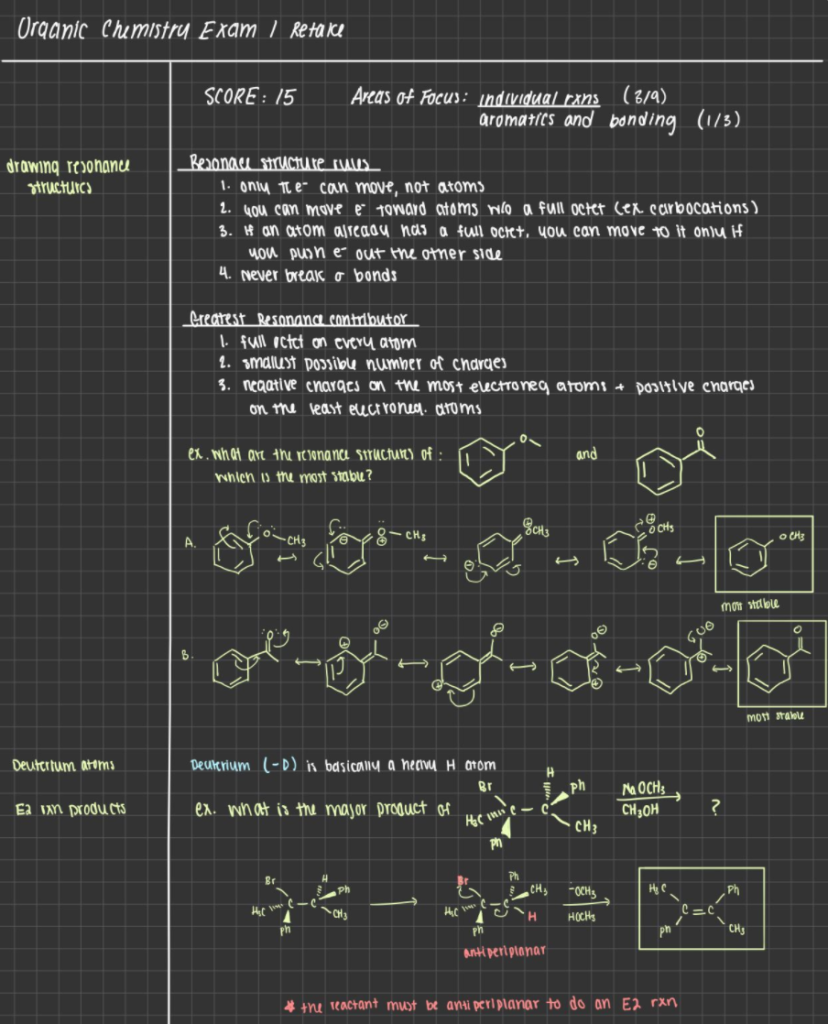Besides your GPA, your score on the Dental Admissions Test (DAT) is a major part of your application. But you certainly don’t need to be a genius to do well. Although I struggled with some science classes in school, I scored in the 98th percentile on my DAT. Here’s how I studied, so that you can crush your DAT, too!

If you’re just getting familiar with the DAT, check out my post 4 Things to do Before You Start Studying for the DAT to see how I made my study schedule and found the right materials!
Daily DAT Study Routine (Phase 1)
It’s easiest to talk about studying for the DAT in two phases. Phase one is when you learn all the material and phase two is when you’re mainly taking practice tests.
Generally, this was my schedule each day.
8am – 12pm
12pm – 1pm
1pm – 4pm
5pm – 6pm
6pm – 7pm
Biology
Lunch
General Chemistry or Organic Chemsitry
Quantitative Reasoning
PAT or Reading
Since I was studying for so long, I used the pomodoro method to keep myself from burning out. I always do 50 minutes of working and then a 10 minute break because I feel like the original 25 minute working periods are just too short — but you can adjust the time to whatever works for you!
Each Subject Breakdown
Biology (20)
Even as a Biology major, I thought this was the hardest section to prepare for. For the first hour, I would read through DAT Bootcamp’s bio summary notes and highlight anything that I didn’t already know. Then, I made Anki flashcards of the highlighted sections only. For the DAT, you need to be efficient so don’t waste time reviewing or making flashcards for things you already know.
While I was making the flashcards, I would read through the full length notes if something wasn’t making sense. Then, for the rest of my time until lunch, I would study my new flashcards and any ones that Anki told me I needed to review from previous chapters.
⭐️ Pro-Tip: I would NOT recommend handwriting notes. I did that for my first week of studying and it took FOREVERRR, and it didn’t help me remember anything.
General Chemistry (24)
Honestly, this is an easy section to study for. Just let Mike’s wisdom guide you. 😌 He really breaks down everything that you need to know. Personally, I’m pretty good at general chemistry, so I played the videos at 1.5x speed to move the review along so I wouldn’t get bored. After watching the videos, do all the practice problems and you’ll be totally fine.
Organic Chemistry (23)
Before I started studying, organic chemistry was the section that I was most afraid of. Although I learned a lot in my organic chemistry classes in school, I also really struggled with the subject, so I was terrified to get started.
But, make 👏🏽 anki 👏🏽 cards👏🏽 I’m talking every single reaction from Mikes reaction sheet. I would screenshot the reagents as the question side of the card, and then I’d make the answer a screenshot of the products.
Do your cards every single day. EVERY. DAY. I’ve been wrecked by orgo so much and this truly saved me. Eventually, the reactions become second nature and you will fly through the reaction problems on the test.
For practice problems, you don’t need to do all of them. If you feel confident in a concept, you can move on. The ochem section of DAT Bootcamp has way too many practice problems on purpose because you’re expected to skip around.
Reading (25)
I’m a vanilla method girl all the way. If you don’t know, the vanilla method is just reading through the entire passage. I read pretty fast, so this was definitely the easiest. Plus, I had actual context to answer the questions, which really helped with accuracy.
When doing timed sections, I would scan through the length of each article before I started answering questions. Sometimes there would be two short readings and then a really, really long one, so getting an idea of length beforehand will help you manage your time.
Also, if there was a super long passage and I didn’t have enough time, I would only read the first half of the article. For the remainder of the passage, I would only read the first and last sentences of the remaining paragraphs. This way I could still get the gist of the article for context, without wasting extra time.
My least favorite method was search and destroy, which is where you look at the question and just skim through the text until you find it. The questions were so hard without any context. Especially since they were science articles, I had no idea what the questions were talking about with that method.
Quantitative Reasoning (24)
For this section, practice problems are everything. There are some weird logic-y questions on the test that took me forever to figure out how to do consistently, but keep practicing and really understand the explanation of the answers if you missed a question. There are only so many types of questions that they ask on the exam. Once you figure out a quick and reliable technique, nothing can surprise you.
Perceptual Ability (21)
Honestly, I practiced pretty little for this compared to the other sections. A lot of the questions were really similar video games that I played growing up, so I picked it up pretty fast. DAT Bootcamp will give you really good techniques on how to approach the questions, so you are in good hands.
Something that really made a HUGE difference in my scores was moving closer and farther from the screen. For me, keyholes are easier when my face is practically touching the screen. But for angle ranking, I need to be really far back. Try the different sections at different distances and see what works for you!
⭐️ MAJOR pro tip: On test day, check your scratch paper. When I took my exam, they gave me blank paper instead of grid paper, so for paper folding I had to try to draw my own perfectly square boxes, which was really stressful. I didn’t have time to flag over the proctor (who wasn’t really paying any attention), so I ended up spending way more time on that section than I normally did and was definitely was less accurate. Then, I was crunched for time on pattern folding. I easily could have gotten a 22 or 23, if I had just checked my paper beforehand.
Practice tests (Phase 2)
After you’ve gone over all the material, the majority of your time will be spent taking practice tests. You can take them untimed at first to get used to the questions, and then you can do timed tests when you’re more confident.
I felt like the most meaningful learning happened when I started taking the practice tests.
After each test, I would go through and take notes on all the concepts or questions that I missed. Never give yourself a free pass to miss questions. Any of those could show up on your real DAT.
I ended up with a set of condensed notes with everything I ever struggled with for each section. I reviewed them every day, which was really helpful. In the end, I had ~50 pages like this, which were really helpful to look over in the parking lot on exam day!

I also found it very helpful to record all of my scores in google sheets. It made it very obvious where I needed to focus on the most and if I was improving. I used conditional formatting to automatically color code my scores. For example, bad scores were red, average scores were orange, good scores were light green, and amazing scores were a rich green.
Conclusion
So that’s it! Doing well on the DAT is very achievable if you are focused and organized. If you have questions, feel free to leave a comment or message me with the contact form. Happy studying!

